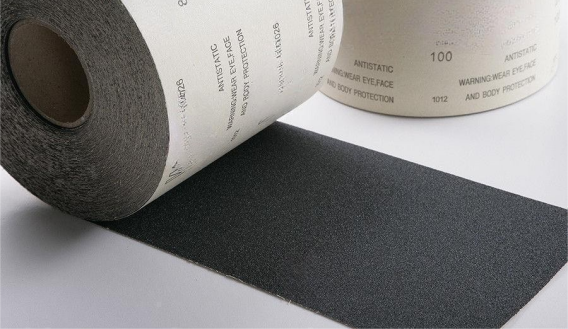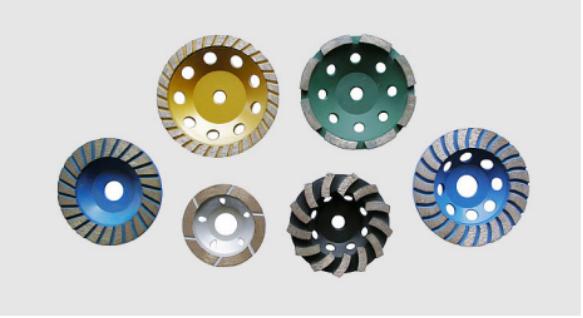In the world of abrasives, two popular options have emerged as leading contenders for surface finishing and material removal: silicon carbide sandpaper and diamond grinding discs. These abrasive tools offer distinct advantages and are widely used in various industries, including metalworking, woodworking, and automotive repairs. While both silicon carbide sandpaper and diamond grinding discs excel in their respective applications, a comparative analysis will shed light on which one provides the superior performance, durability, and cost-effectiveness. In this article, we will delve into the characteristics of each abrasive, their applications, and evaluate their pros and cons to determine which option is better suited for specific tasks.
Silicon Carbide Sandpaper
A. Characteristics and Composition
Silicon carbide sandpaper is a versatile abrasive material composed of silicon carbide grains bonded to a flexible paper backing. It is available in various grit sizes, indicating the coarseness or fineness of the abrasive particles. Silicon carbide sandpaper is renowned for its exceptional hardness, sharpness, and durability, making it suitable for a wide range of applications.
B. Applications
Woodworking: Silicon carbide sandpaper is commonly used for sanding and finishing wood surfaces. It efficiently removes stock material, smoothes rough surfaces, and prepares wood for staining or painting.
Metalworking: This abrasive is effective in grinding, deburring, and polishing metal surfaces. It can be used on steel, stainless steel, and non-ferrous metals to remove rust, corrosion, and weld discoloration.
Automotive Repairs: Silicon carbide sandpaper is favored in automotive applications due to its ability to remove paint, rust, and imperfections from car bodies and components.
C. Pros and Cons
Pros:
- Cost-Effective: Silicon carbide sandpaper is relatively more affordable than diamond grinding discs, making it a cost-effective option for budget-conscious users.
- Versatility:It is compatible with a wide range of materials, including wood, metal, plastics, and composites, making it a versatile abrasive for multiple applications.
- Aggressive Cutting Power:Silicon carbide sandpaper provides excellent material removal rates, allowing for faster sanding and grinding operations.
- Flexibility: The paper backing offers flexibility, enabling better conformity to curved surfaces and intricate shapes.
Cons:
- Limited Lifespan: Silicon carbide sandpaper tends to wear down faster compared to diamond grinding discs, especially when used on hard or abrasive materials.
- Clogging:The paper backing can become clogged with debris during sanding, reducing its effectiveness and requiring frequent cleaning or replacement.
- Lower Precision:The coarser grits of silicon carbide sandpapermay not provide the same level of precision and fine finish as diamond grinding discs.
Diamond Grinding Disc
A. Characteristics and Composition
Diamond grinding discs are abrasives that utilize industrial-grade synthetic diamonds bonded to a metallic or resin matrix. The diamond particles create an ultra-hard cutting surface, known for their exceptional strength and durability.
B. Applications
Concrete and Masonry: Diamond grinding discs are widely used for grinding, smoothing, and leveling concrete and masonry surfaces. They effectively remove coatings, adhesives, and imperfections, providing a smooth finish.
Stone and Tile: Diamond discs are ideal for shaping, beveling, and polishing natural stone, granite, and ceramic tiles, enabling precise and intricate designs.
Glass and Ceramic: The hardness and precision of diamond grinding discs make them suitable for shaping and edging glass, ceramics, and other fragile materials.
C. Pros and Cons
Pros:
- Exceptional Durability:Diamond grinding discs offer superior longevity compared to silicon carbide sandpaper, as diamonds are one of the hardest substances on Earth.
- Precision and Finishing: The fine diamond grits on grinding discs enable high-precision grinding and polishing, resulting in smooth, professional finishes.
- Minimal Clogging: Diamond discsare less prone to clogging, ensuring consistent performance throughout prolonged use.
- Heat Dissipation:Diamonds possess excellent thermal conductivity, which aids in dissipating heat generated during grinding, reducing the risk of damage to the workpiece.
Cons:
- Higher Cost:Diamond grinding discs are generally more expensive than silicon carbide sandpaper, making them less economical for certain applications.
- Limited Versatility:Diamond discs are primarily suited for grinding and polishing hard materials like concrete, stone, and ceramics. They may not be as effective on softer materials or metals.
- Fragility: While diamond particles are extremely hard, the bond between the diamond and the matrix can be susceptible to wear or damage in harsh grinding conditions.
Conclusion
Choosing between silicon carbide sandpaper and diamond grinding discs depends on the specific task requirements and the materials being worked on. Silicon carbide sandpaper offers cost-effectiveness, versatility, and aggressive cutting power, making it suitable for various applications in woodworking, metalworking, and automotive repairs. On the other hand, diamond grinding discs provide exceptional durability, precision, and finishing capabilities, making them ideal for tasks involving concrete, stone, and ceramics.
Ultimately, the decision between silicon carbide sandpaper and diamond grinding discs should be based on factors such as budget, desired finish quality, and the nature of the materials being worked on. By understanding the unique characteristics and applications of each abrasive, users can make informed choices and achieve optimal results in their respective fields.


